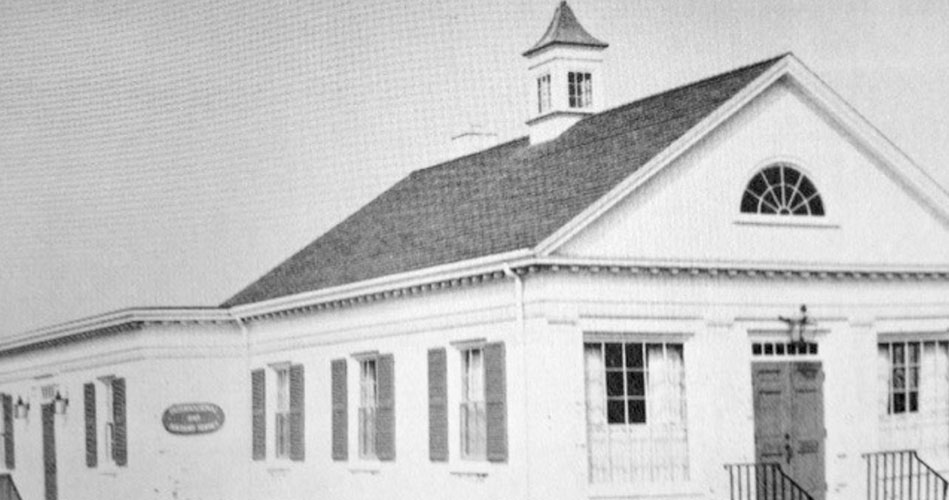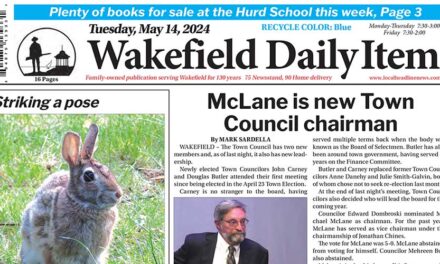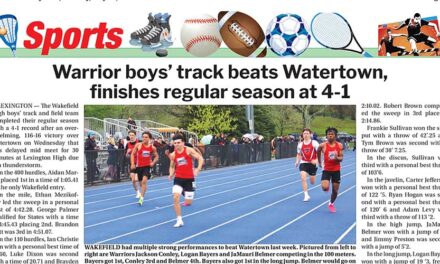By HELEN BREEN
LYNNFIELD — International business executive John E. Harriss (1896-1986) served on the Lynnfield Planning Board in the 1950s when the town’s population was expanding rapidly.
Harriss supported engaging the services of Town Planner Alan Benjamin, who created the town’s first Master Plan.
Return of the native
In 1945, Harriss and his family returned to Lynnfield after spending seven years in England during the tumultuous years of World War II.
Harriss, an executive in the shoe and leather industry, sent several letters to the Lynnfield Village Press during that period describing the wartime conditions they experienced.
The Planning Board
The Harriss family was surprised by the many changes that had taken place in Lynnfield since their departure in 1938, especially the increase in homebuilding. After he reestablished his business stateside, Harriss was asked to fill an open position on the Lynnfield Planning Board, a board which he said heretofore “had done very little planning.”
The Planning Board was facing an enormous quandary in the early 1950s because “a real estate developer had submitted plans for 175 houses in an area off Walnut Street.” The only zoning restriction up to that time was that a building lot must be 10,000-square-feet with 100-feet of frontage.
Nelson Todd, an original member of the Planning Board, spoke vehemently against the project, later called “Glen Meadow,” because Lynnfield lacked the schools, fire and police services to support such a sudden increase in population. Mr. Todd “left the meeting in a huff.” Harriss then took the floor explaining that “the difficulty was not between right and wrong,” but between the developer’s “right” to build within the legally prescribed footage, and the town’s “right” to object to such a proposal as unfeasible.
Harriss suggested that the developer “review his plans,” and spread the construction out over five years. But the firm’s attorney would have none of it. If the builders proceeded, as they maintained it was their prerogative, the town could retaliate. Harriss warned that they might post signs at the site declaring, “The town of Lynnfield cannot, and will not, supply water to this project.”
Eventually, the developer agreed to a more realistic timeframe.

JOHN HARRISS’ firm, International Advisory Service, built this office building at 1085 Summer St. Royal Barry Wills designed the building, which opened in 1962.
The “Benjamin Report”
After this brouhaha, Harriss proposed to the Planning Board that they should engage a “professional town planner” to resolve zoning and other thorny issues arising from the doubling of Lynnfield’s post-war population.
After much haggling, voters agreed. In 1952, Town Planner Alan Benjamin’s services were engaged for $8,000. His Master Plan Summary Report, complete with “maps, recommendations and reasons for change,” was made available to all Lynnfield residents in January 1955.
Harriss was asked to write an introduction to the report. In response to the question “Will the Master Plan provide an ideal town?,” he replied:
“Lynnfield must necessarily compromise with the past,” Harriss wrote. “We are not building a new town on a prairie, but trying to preserve as best we can a community that has been in existence for over 200 hundred years.”
Ongoing service
Harriss continued to serve on various town boards, including the Finance Committee, the new High School Building Committee and one concerned with the cleanup of Pillings Pond. But after several years, he concluded that “my usefulness had ceased.” The younger generation, he realized, had different ideas.
Harriss said many younger families “worked for large corporations and resided in Lynnfield only temporarily until they were moved to another location.”
“The old ideas of planning ahead economically were old fashioned,” said Harriss. “Their homes were mortgaged to the hilt and they saw no reason why the town should not go into debt and issue bonds that would be payable at some future date.”
Meanwhile, Harriss developed his family business, International Advisory Service. To accommodate the firm’s growing needs, he built a Colonial-style office building on 1085 Salem Street in 1962. The business was later moved to Topsfield, its present location.
In a personal memoir written in 1981, Harriss reflected on the original Master Plan, the “Benjamin Report.” He concluded: “Looking back after 31 years, I think this basic plan was responsible for the town we enjoy today. As Benjamin told us then, planning is never permanent, it must keep up with change and future Planning Boards must bear this in mind.”
Excellent advice moving forward.
— Send comments to helenbreen@comcast.net.






